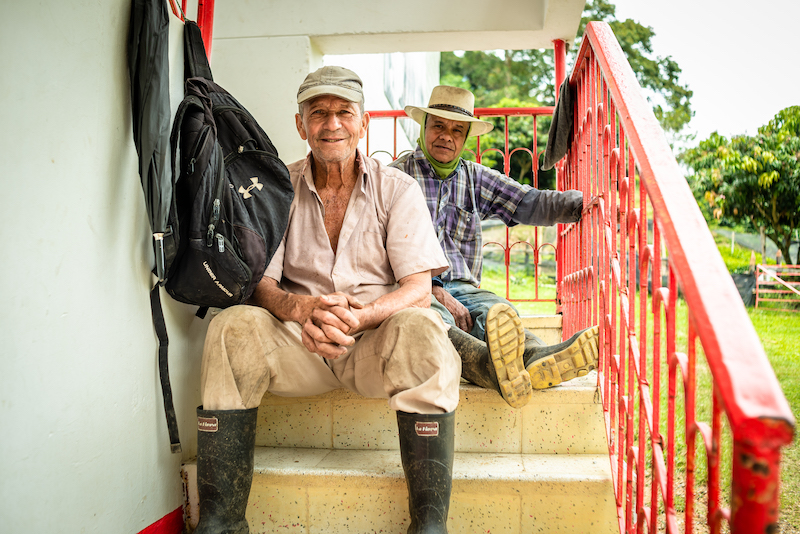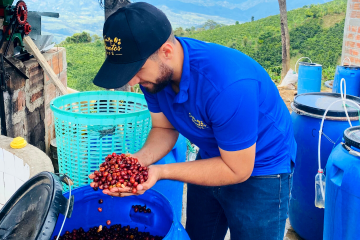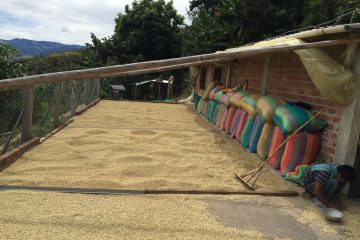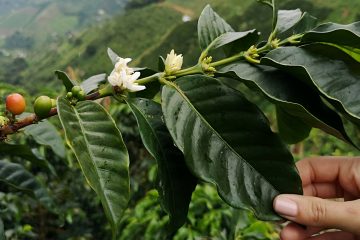Just over a month ago the Colombian government proposed a major tax reform which sparked massive protests. The government quickly withdrew the reform proposal, but protests continued as people expressed their frustration of years of poverty and inequality, exacerbated by a violent response from police.
Sadly there is a long history of violent conflict in Colombia. It dates back to the 1940s and 1950s when the country endured “La Violencia”, a decade-long conflict between liberals and conservatives that was sparked by the assassination of liberal presidential candidate, Jorge Eliécer Gaitán. This conflict devolved into a civil war between the government and newly formed left wing guerilla groups. The impact of this violence on families within Colombia is still very tangible, especially in rural areas.
In 2016 the Colombian government brokered a peace deal with the largest guerilla group in the country, the Revolutionary Armed Forces of Colombia (FARC in Spanish). The FARC agreed to submit their weapons and cease fighting, and the government agreed to support demobilised FARC soldiers and provide economic opportunities in the rural areas. The current government is of a different political party and critics say they have been lacklustre in their commitment to the peace deal. As a result, civil conflict continues in many rural areas.

The impact on the coffee sector
Since the initial protests began things have escalated, and currently protestors are blocking roads, especially in the south where there are few major arterials between regions. Huila, Tolima, and Nariño are completely inaccessible and there are food shortages in many parts of the country.
At the moment coffee can not be transported out of coffee growing regions and roads to the larger ports have been blocked. Shipping lines have cut services to Buenaventura completely, the port that exports 70% of Colombian coffee. The port of Cartagena is operating at a limited capacity.
Delayed harvest may benefit farmers
Across the country we’re receiving reports of a delayed harvest. Under normal circumstances this would be distressing for farmers as cash flow is frequently an issue and a delayed crop means a delay in getting paid. This year however, a later harvest gives the farmers extra time to wait out the roadblocks. If the protestors and the government can reach an agreement soon, many farmers may be able to sell their crop as usual.
Antioquia
In Antioquia the mitaca is usually harvested from March to April, however unexpectedly cool weather has delayed the ripening of cherries. Excessive rain during the flowering season damaged flowers, which will mean the harvest is smaller than usual. We expect the mitaca to be harvested over quite an extended period, so the mitaca harvest might merge into the main harvest.
Antioquia has not been impacted by roadblocks like the south of the country, so it is still possible to move around the region.
Nariño
The harvest is also delayed in Nariño. Normally it would be well underway in May but we hear there is still a lot of coffee in the field and picking will continue throughout June. We buy a lot of naturals and special prep coffees from this region, processing methods which pose much greater risk to the producer, so we have been in regular contact with our suppliers in Nariño to let them know we are committed to buying these coffees.
Tolima
We work with producers of organic coffees in Tolima and they report delays in the harvest here too. There are also shortages of fuel which means that coffee cannot be transported from the farms to the purchasing sites. Fortunately our partner in Tolima has been able to move coffee to their warehouse and are planning to ship from the port of Santa Marta.
Huila
The harvest in some parts of Huila has been underway for a few weeks which is a slight delay for their main crop. There is already coffee available for export in Huila but due to the roadblocks, the region has only exported 11% of the available volumes.
Price
The internal price for coffee in Colombia is set by the National Federation of Coffee Growers (FNC). This is the price they pay for coffee which they will buy, any day of the year, at one of more than 500 buying stations around the country. The price depends on a number of factors including the current C-Price, the exchange rate from USD to COP, and a quality differential that Colombian coffee can expect to earn on the international market.
Even before the recent protests, the FNC price was very high, possibly because Brazil is expected to produce a smaller volume of coffee this year. The ongoing roadblocks mean very little coffee is being exported, increasing prices further. Currently the internal FNC minimum is at COP 1,470,000.00 per carga (125 kg parchment), with a further premium required for higher quality. The C market has also been rising, and the FX has been very volatile.
How does this affect your Colombia buying this year?
The current situation in Colombia will have a far reaching impact on coffee growers and rural communities. We hope for a peaceful resolution which allows producers and suppliers to resume business, and we are in regular contact with people on the ground to do all that we can to buy the coffees we need and love from our partners. In the meantime there are two things we know for certain. The first is that prices for Colombian coffee will be higher this year. The second is that they will arrive later than usual.
If your customers are willing to pay for high quality Colombians and you can wait, we will have some great coffees for you as soon as we’re able.
If you need Colombians now, or if you need them at a lower price point, we have a good selection of micro-lots currently in our Belgium warehouse ready for dispatch. We recently cupped many of these lots and they are tasting great. See our offers list for the latest cupping notes.
Have questions? Reach out to your sales person or email us at coffee@nordicapproach.no.



0 Comments